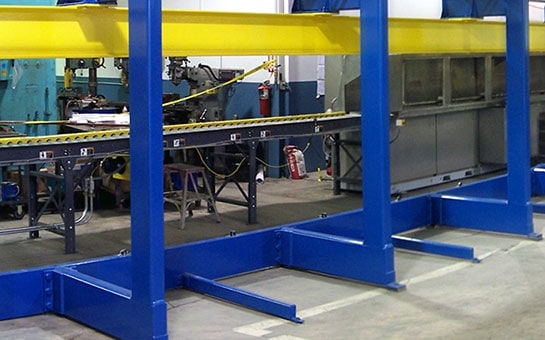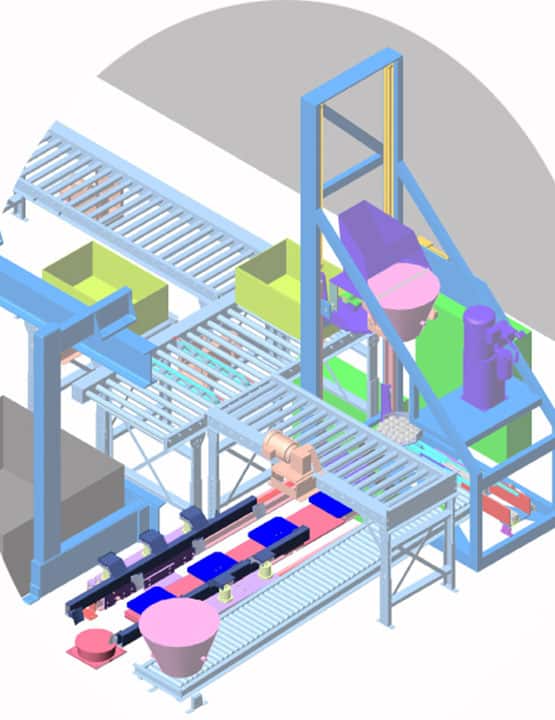Turnkey
A metal parts manufacturing company required an automatic washing machine that would cut down on manual operation and improve its bottom line. Re:Build Optimation used its material handling and automation expertise to design a machine that would queue, load, unload and sort parts as one automated process. Re:Build Optimation then fabricated and assembled the 68-foot-long machine that met the company’s goal of a cost-effective and efficient washing procedure. The machine was solely produced by Re:Build Optimation from concept to completion, including the electrical, mechanical, material handling, process engineering, design, fabrication and assembly of each sub-system. The new washer has the room to queue up to five incoming kettles and index kettles into an automatic kettle unloader that will transfer the parts from the kettles into washer baskets. The operator delivering the kettle will make push button selections to indicate the product type tote bin and the wash cycle treatment. A washer in-feed conveyor will convey and transfer the loaded baskets into the washer system conveyor, which will take the parts through its cycle. An out-feed conveyor will receive the washed part baskets as they exit the washer and transfer the basket into a basket shuttle dumper, which will then dump the parts from the basket into the desired tote bin. The empty basket then goes back to a return conveyor for queue-up, and the process starts again.
The project posed a few challenges during the design of the machine, one of which was the client’s desire to keep the same kettles and hand trucks it had used to carry parts before the new machine was built. Re:Build Optimation designed the new machine to work with these existing tools to avoid interfering with the current process at the plant. Another hurdle was the frequency that the operators loaded kettles into the machine. Since operators would drop off kettles in random cycles, Re:Build Optimation needed to design the system to accumulate and queue each load to keep the operators from waiting. Re:Build Optimation was able to design an accumulating walking beam, which would both pick the different kettles up and allow them to accumulate before going into the machine, to prevent gaps in the cycle.
The machine was successfully installed at the customer’s site.


